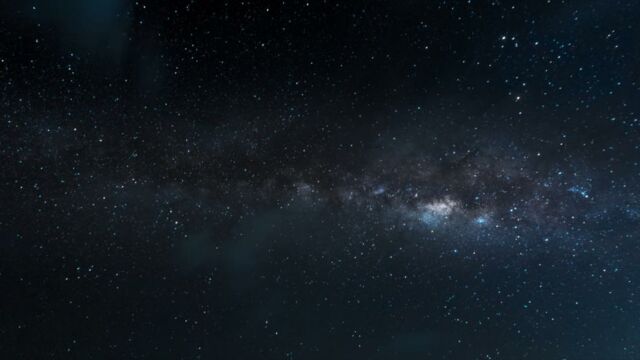Discover our latest podcast
13.51 billion years. Until recently, that was how old we guessed our galaxy, the Milky Way, was. But a recent study commissioned by researchers at the ARC Centre of Excellence for All Sky Astrophysics in 3 Dimensions in Australia (ASTRO-3D) and which was carried out by 38 scientists, has revised and scaled down their previous estimations. To do this, the researchers used data collected from the Kepler Telescope, which has now been retired, to measure the ‘quakes’ emitted by the stars and their conclusions were published this month in the monthly bulletins of the Royal Astronomical Society.
The age of stars judged by the sounds they emit
Just like other so-called ‘barred spiral’ galaxies in the universe, the Milky Way is made up of two round structures: a thin disk and a thick disk. And while the entire galaxy is made up of between 200 and 400 billion stars, the thick disk (which envelops the thin disk) contains just about 20% of them. It is considered the older of the two structures – on one hand because of the larger ‘metallicity’ of its stars (the fraction of their mass which doesn’t consist of hydrogen or helium), and on the other hand due to its ‘puffier’ nature. Therefore, astronomers have been trying to determine the age of this thick disk in order to have a clearer indication of the age of our galaxy.
To do this, they used a method known as ‘asteroseismology’ which consists of measuring the waves released by a star generated by the quakes inside.
‘The quakes generate soundwaves inside the stars that make them ring or vibrate,’ explained Dennis Stello, co-author of the study, in a press release.
‘The frequencies produced tell us things about the stars’ internal properties, including their age. It’s a bit like identifying a violin as a Stradivarius by listening to the sound it makes.’
Flawed galactic models
In reality, researchers are not actually capable of detecting the ‘sounds’ made by these stars. But they are able to measure the movements within a star’s interior depending on the changes in light and brightness that they are able to observe. In this way, researchers are carrying out something similar to ‘galactic archaeology’, and as a result, are capable of finding out how far back the formation of our Milky Way dates.
The team of researchers had previously tried to align the asteroseismic data obtained from previous galactic models that already existed but had been unsuccessful. As it turns out, these previous models suggested that the thick disk was made up of a group of younger low-mass, low-metallicity stars. However, the data obtained from the K2 mission, which involved simultaneously observing different parts of the sky over a period of 80 years, have finally revealed an error in the assumed chemical composition of these stars which led to an inaccurate estimation of their ages being made.
A mystery resolved
From the data they have recently collected, the team has been able to revise the official estimations made about the thick disk in the Milky Way and they have finally concluded that they are around 10 billion years old.
‘This finding clears up a mystery,’ explained Dr Sanjib Sharma, director of the study and member of ASTRO-3D.
‘Earlier data about the age distribution of stars in the disk didn’t agree with the models constructed to describe it, but no one knew where the error lay – in the data or the models. Now we’re pretty sure we’ve found it.’
More findings are still expected since scientists are constantly releasing data collected by the Kepler telescope before it was retired in November 2018. Analysis will most likely now be combined with that from NASA’s brand-new Transiting Exoplanet Survey Satellite (TESS) which was sent into space seven months before its predecessor was retired. These missions will undoubtedly help astronomers find out more about the formation and evolution of our galaxy.















